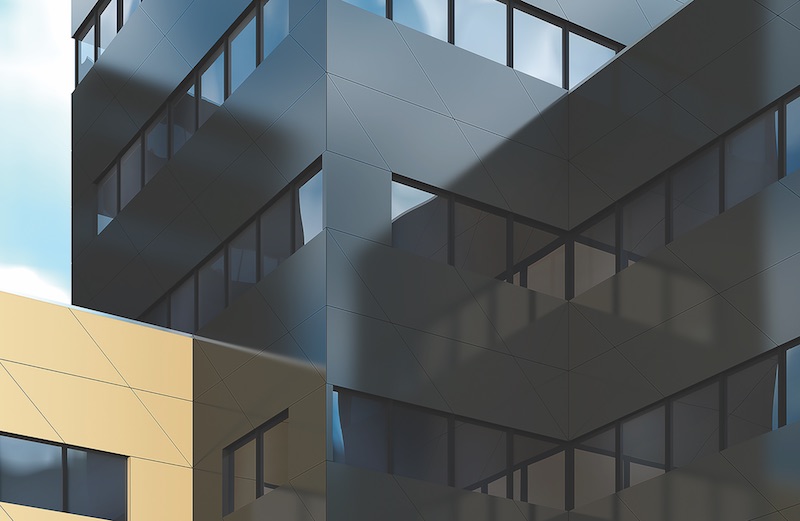From an integrated, single-component façade system to insulated roof panels, these 12 roofing and wall products and accessories all share one thing in common: metal.
1. Isoleren RL roof panel
Atas International
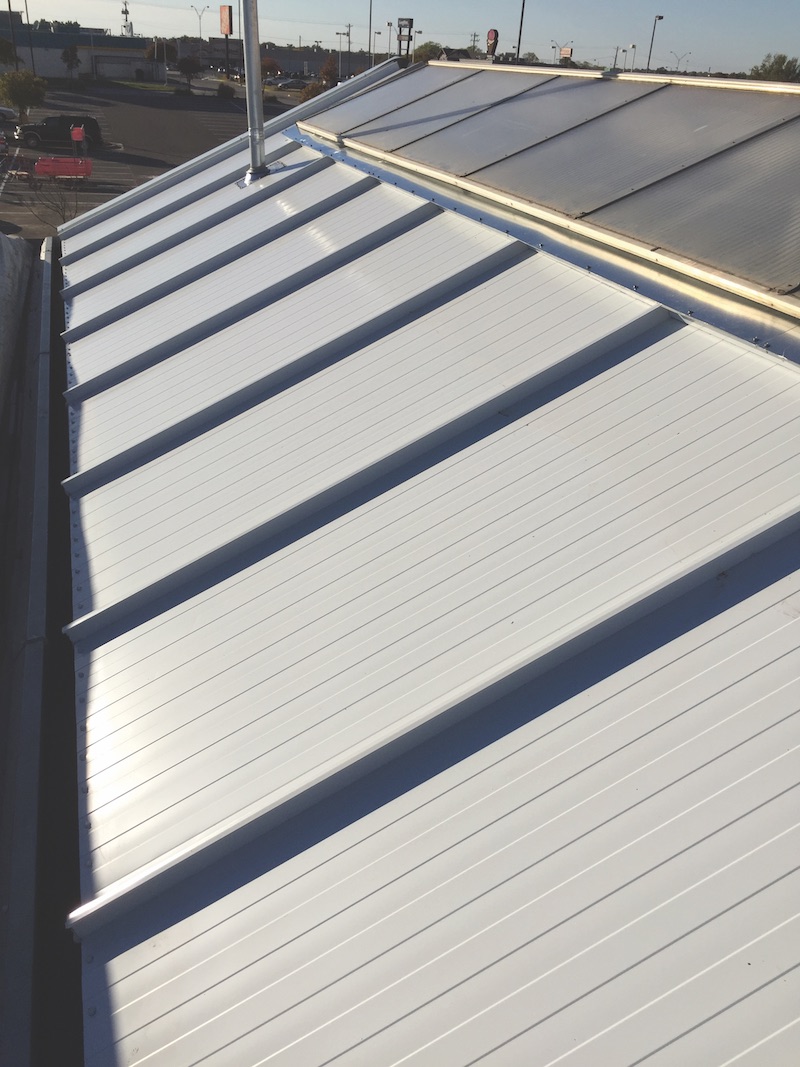
Insulated metal roof panel offers the appearance of standing seam metal roofing with the added benefits of thermal performance and durability. Its standing seam “T” lock design requires no lifting to engage. Available thicknesses: 2.5, three, four, five, and six inches. Nominal R-8 per inch of insulation thickness. Exterior and interior gauge: 26, 24, and 22. The panel’s core is continuously poured-in-place polyiso insulating foam.
2. Formawall
Centria
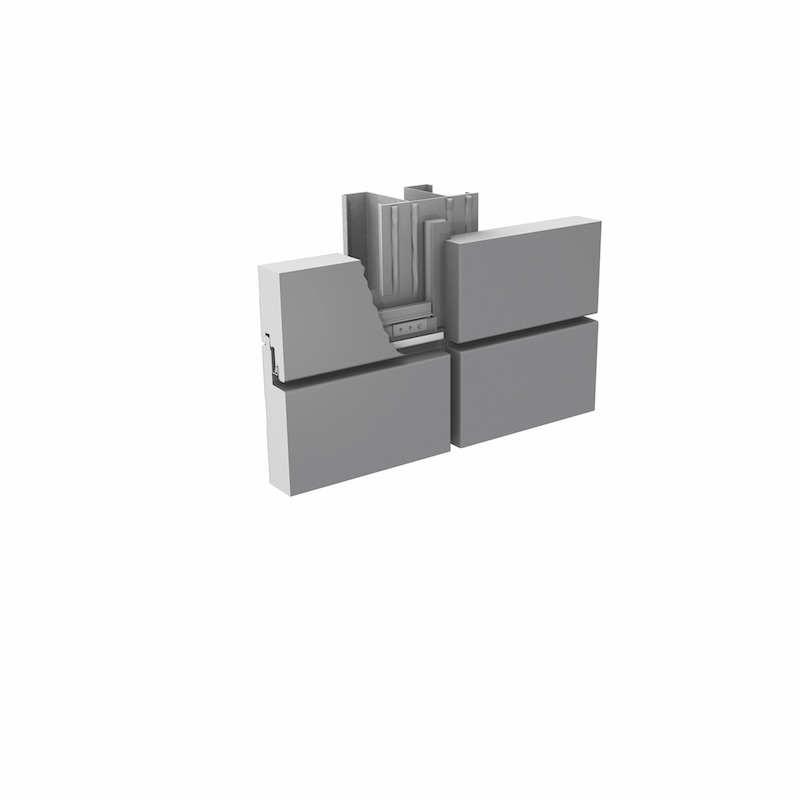
Insulated metal panel system has been enhanced with the Formawall Insulated Metal Vertical (IMV) Joint (pictured) and Formawall Pressure-Equalized (PE) Seal Plate. The IMV joint provides a thermal barrier at the end joint and eliminates exposed gaskets and sealants to reduce the opportunity for streaking or staining on the panels. The PE Seal Plate provides multiple lines of defense against air and water infiltration.
3. Highline wall panels
Petersen Aluminum
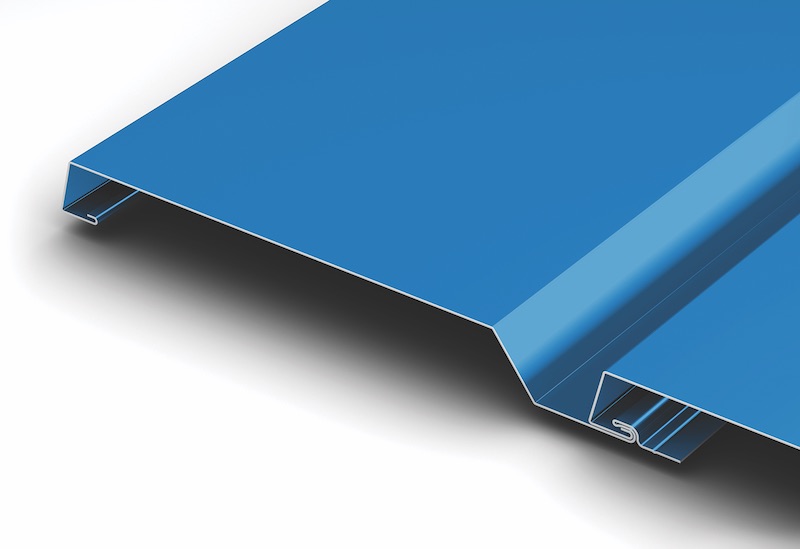
Metal wall panels feature varying rib patterns and widths for creative architectural effects. Highline panels are 13/8-inch deep, creating dramatic shadow lines. The panels can be installed horizontally or vertically for design flexibility. Options include 12- or 16-inch widths; no-clip or clip-fastened installation; and lengths up to 22 feet for aluminum and 30 feet for steel. Available in 45 colors.
4. Trespa Meteon
Trespa
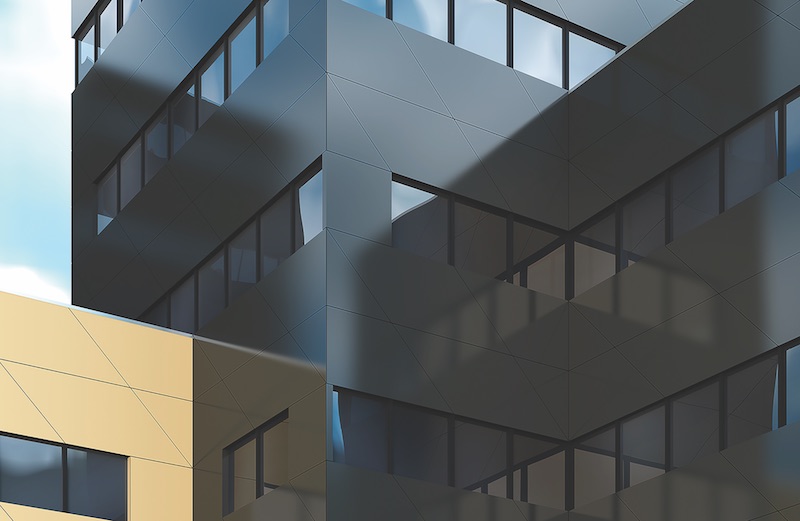
New finish options are available for the Trespa Meteon line of architectural panels. The Lumen collection includes three finishes—Diffuse, Specular, and Oblique—that enable light to be reflected, scattered, enhanced, or muted. Diffuse removes glossiness, reflection, and texture for a smooth, subdued appearance. Oblique provides a matt-and-gloss surface that brings a natural, weathered look. Specular offers a reflective surface for liveliness with deep colors and gloss.
5. Benchmark Kreate panels
Kingspan
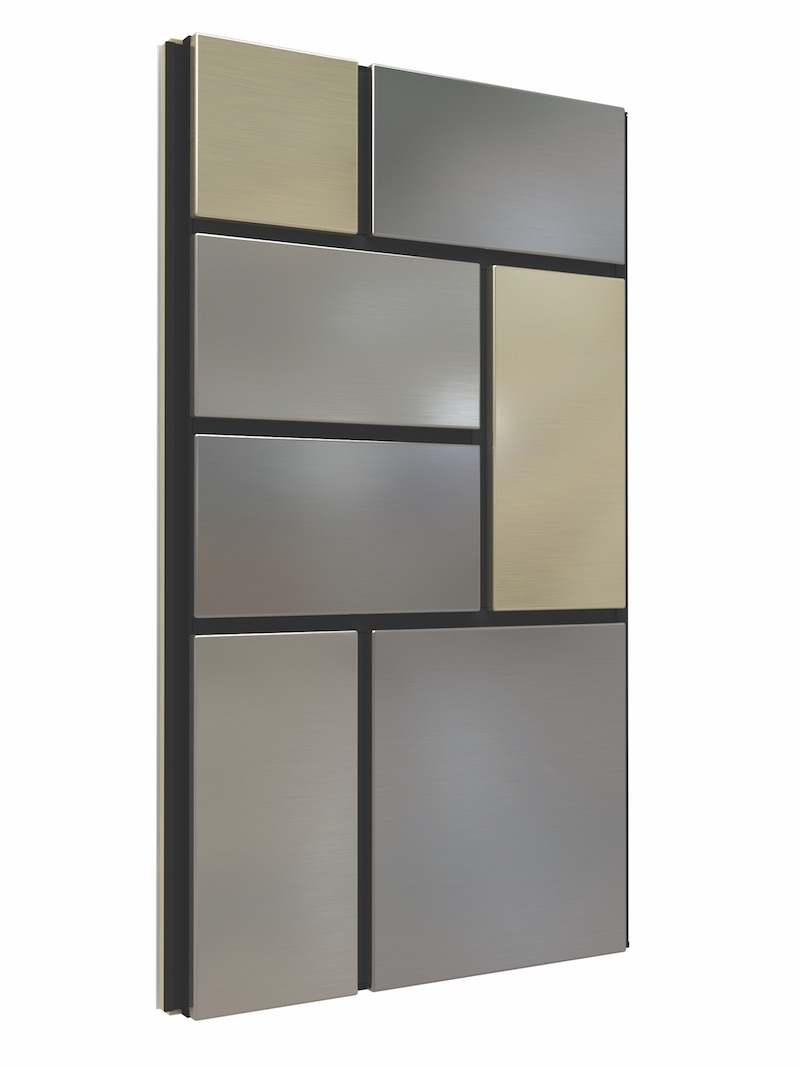
Metal façade system combines seamless steel or aluminum cassette façade technology with insulated panel designs to create an integrated, single-component system with design flexibility. The cassettes are integrated into each insulated panel and offer the ability to specify the color, size, and configuration of each cassette, including rounded corners. Benchmark Kreate offers faster installation versus traditional built-up rainscreens.
6. Durastar Ultra-Cool
PPG

New coil coatings combine an advanced silicone-modified polyester formulation with infrared-reflective pigments to extend the service life of metal roofing, siding, and panels. Polyester-based resin, cross-linking, and tinting technologies protect metal industrial, agricultural, and storage buildings while providing chalk resistance and fade resistance. IR-reflective pigments deflect solar heat, enabling buildings to stay cooler.
7. 138T Recover System
McElroy Metal

Standing seam metal roof system is designed to install directly over existing asphalt shingles, providing a fast, economical, and energy-efficient reroof solution. The cost of tear-off and dumping are eliminated, and the new system can be installed without the cost of an underlayment. Patent-pending clips create an energy-saving above sheathing ventilation (ASV) airspace between the existing roof and new 138T roof.
8. FRP CleanSeam
Metl-Span
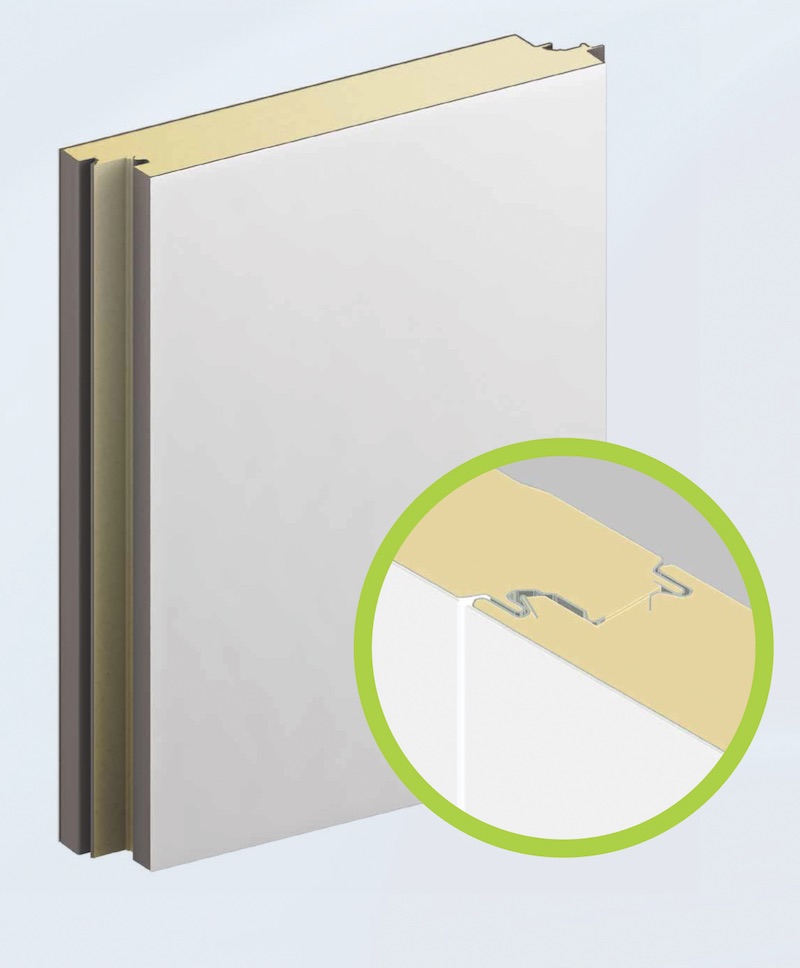
Insulated panel system for food processing rooms creates virtually seamless walls and ceilings by combining fiberglass reinforced plastic (FRP) panel faces with a flush-surface hard joint. The joint has no voids and is mold, mildew, and impact resistant. Joints are permanently sealed with a two-part caulking compound. FRP CleanSeam eliminates the constant maintenance associated with silicone- and butyl-caulked joints that deteriorate from rigorous wash-down regimens.
9. Retro-R panel
MBCI

Designed for installation over existing metal roof systems, Retro-R is an exposed-fastening panel with rib spacing 12 inches on center, a rib height of 11/16 inch, and a minimum slope of 1/2:12. It has been approved as a minimum 26-gauge panel installed over an existing minimum 29-gauge PBR panel. Its integrated drip stop membrane prevents rust from the old roof from transferring to the new panel. Recently received statewide approval for use in Florida.
10. Fluropon Pure
Metal Sales and Valspar
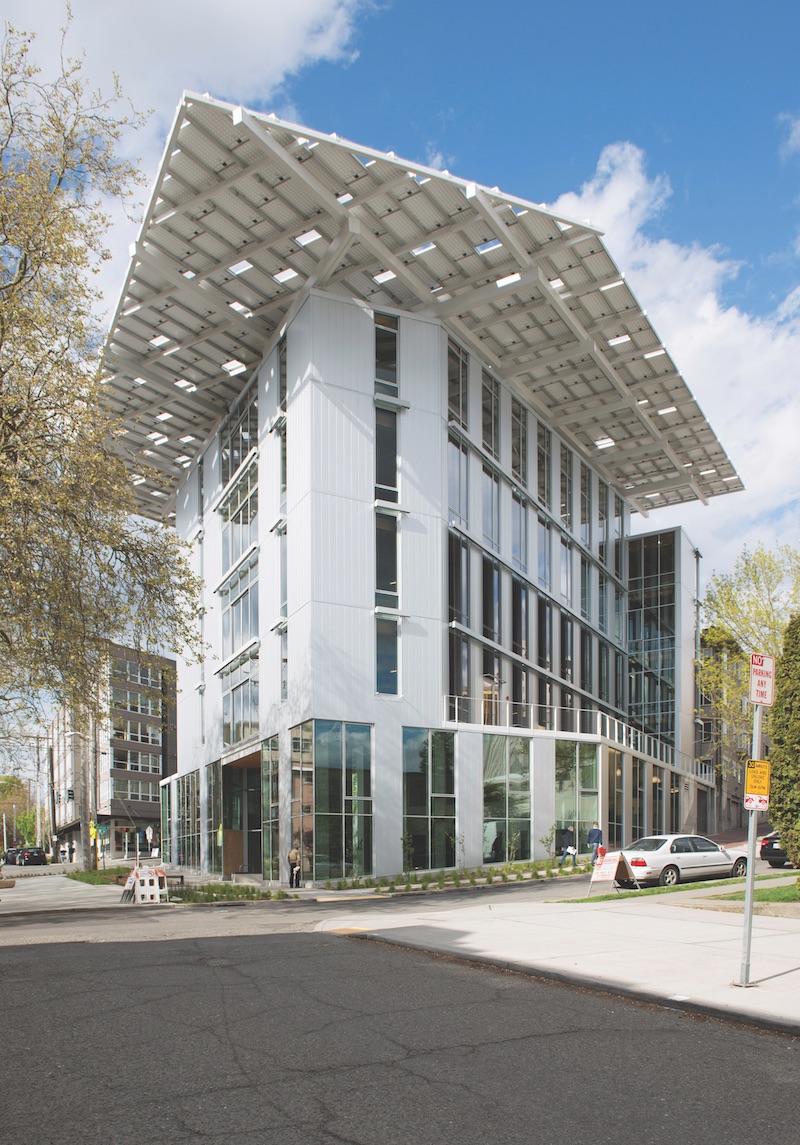
Metal Sales’ line of metal wall and roof products is available with Valspar’s Fluropon Pure, a PVDF paint system formulated for compliance with the Living Building Challenge’s stringent requirements for hazardous material reduction. The coating is ideal for buildings with extreme environmental requirements, or anywhere a greener product is needed. Metal Sales also fully disclosed all of the ingredients in its acrylic-coated Galvalume roof and wall panels as Red List-free.
11. Tapered Series
Dri-Design

Lightweight aluminum panels can be angled in any direction to varying degrees and depths, offering design freedom without the need to modify the substrate or weather barrier. Tapered Series panels are particularly well suited for retrofit applications, where uneven and leaning walls are commonplace. Panel depth can range from 1¼ to four inches, depending on the severity of the taper design. Company offers panels in virtually any size.
12. RidgeLine panelS
Green Span Profiles

This patented insulated roof panel is a 23/8-inch-tall, mechanically seamed unit that covers 42 inches, with thickness options of 2.5, three, four, and five inches. RidgeLine panels slide together (no rolling or lifting to engage the sidelap), creating a continuous, weathertight seal at the sidelap with no interruptions at the clips. Exterior and interior metal panels are available in 26-, 24- and 22-gauge Galvalume/G90 galvanized and stainless steel.
Related Stories
| Aug 11, 2010
Great Solutions: Business Management
22. Commercial Properties Repositioned for University USE Tocci Building Companies is finding success in repositioning commercial properties for university use, and it expects the trend to continue. The firm's Capital Cove project in Providence, R.I., for instance, was originally designed by Elkus Manfredi (with design continued by HDS Architects) to be a mixed-use complex with private, market-...
| Aug 11, 2010
Seven tips for specifying and designing with insulated metal wall panels
Insulated metal panels, or IMPs, have been a popular exterior wall cladding choice for more than 30 years. These sandwich panels are composed of liquid insulating foam, such as polyurethane, injected between two aluminum or steel metal face panels to form a solid, monolithic unit. The result is a lightweight, highly insulated (R-14 to R-30, depending on the thickness of the panel) exterior clad...
| Aug 11, 2010
Nurturing the Community
The best seat in the house at the new Seahawks Stadium in Seattle isn't on the 50-yard line. It's in the southeast corner, at the very top of the upper bowl. "From there you have a corner-to-corner view of the field and an inspiring grasp of the surrounding city," says Kelly Kerns, project leader with architect/engineer Ellerbe Becket, Kansas City, Mo.
| Aug 11, 2010
AIA Course: Historic Masonry — Restoration and Renovation
Historic restoration and preservation efforts are accelerating throughout the U.S., thanks in part to available tax credits, awards programs, and green building trends. While these projects entail many different building components and systems, façade restoration—as the public face of these older structures—is a key focus. Earn 1.0 AIA learning unit by taking this free course from Building Design+Construction.
| Aug 11, 2010
AIA Course: Enclosure strategies for better buildings
Sustainability and energy efficiency depend not only on the overall design but also on the building's enclosure system. Whether it's via better air-infiltration control, thermal insulation, and moisture control, or more advanced strategies such as active façades with automated shading and venting or novel enclosure types such as double walls, Building Teams are delivering more efficient, better performing, and healthier building enclosures.
| Aug 11, 2010
Glass Wall Systems Open Up Closed Spaces
Sectioning off large open spaces without making everything feel closed off was the challenge faced by two very different projects—one an upscale food market in Napa Valley, the other a corporate office in Southern California. Movable glass wall systems proved to be the solution in both projects.
| Aug 11, 2010
AIA course: MEP Technologies For Eco-Effective Buildings
Sustainable building trends are gaining steam, even in the current economic downturn. More than five billion square feet of commercial space has either been certified by the U.S. Green Building Council under its Leadership in Energy and Environmental Design program or is registered with LEED. It is projected that the green building market's dollar value could more than double by 2013, to as muc...
| Aug 11, 2010
BIM adoption tops 80% among the nation's largest AEC firms, according to BD+C's Giants 300 survey
The nation's largest architecture, engineering, and construction companies are on the BIM bandwagon in a big way, according to Building Design+Construction's premier Top 50 BIM Adopters ranking, published as part of the 2009 Giants 300 survey. Of the 320 AEC firms that participated in Giants survey, 83% report having at least one BIM seat license in house, half have more than 30 seats, and near...
| Aug 11, 2010
Thrown For a Loop in China
While the Bird's Nest and Water Cube captured all the TV coverage during the Beijing Olympics in August, the Rem Koolhaas-designed CCTV Headquarters in Beijing—known as the “Drunken Towers” or “Big Shorts,” for its unusual shape—is certain to steal the show when it opens next year.
| Aug 11, 2010
Tall ICF Walls: 9 Building Tips from the Experts
Insulating concrete forms have a long history of success in low-rise buildings, but now Building Teams are specifying ICFs for mid- and high-rise structures—more than 100 feet. ICF walls can be used for tall unsupported walls (for, say, movie theaters and big-box stores) and for multistory, load-bearing walls (for hotels, multifamily residential buildings, and student residence halls).


